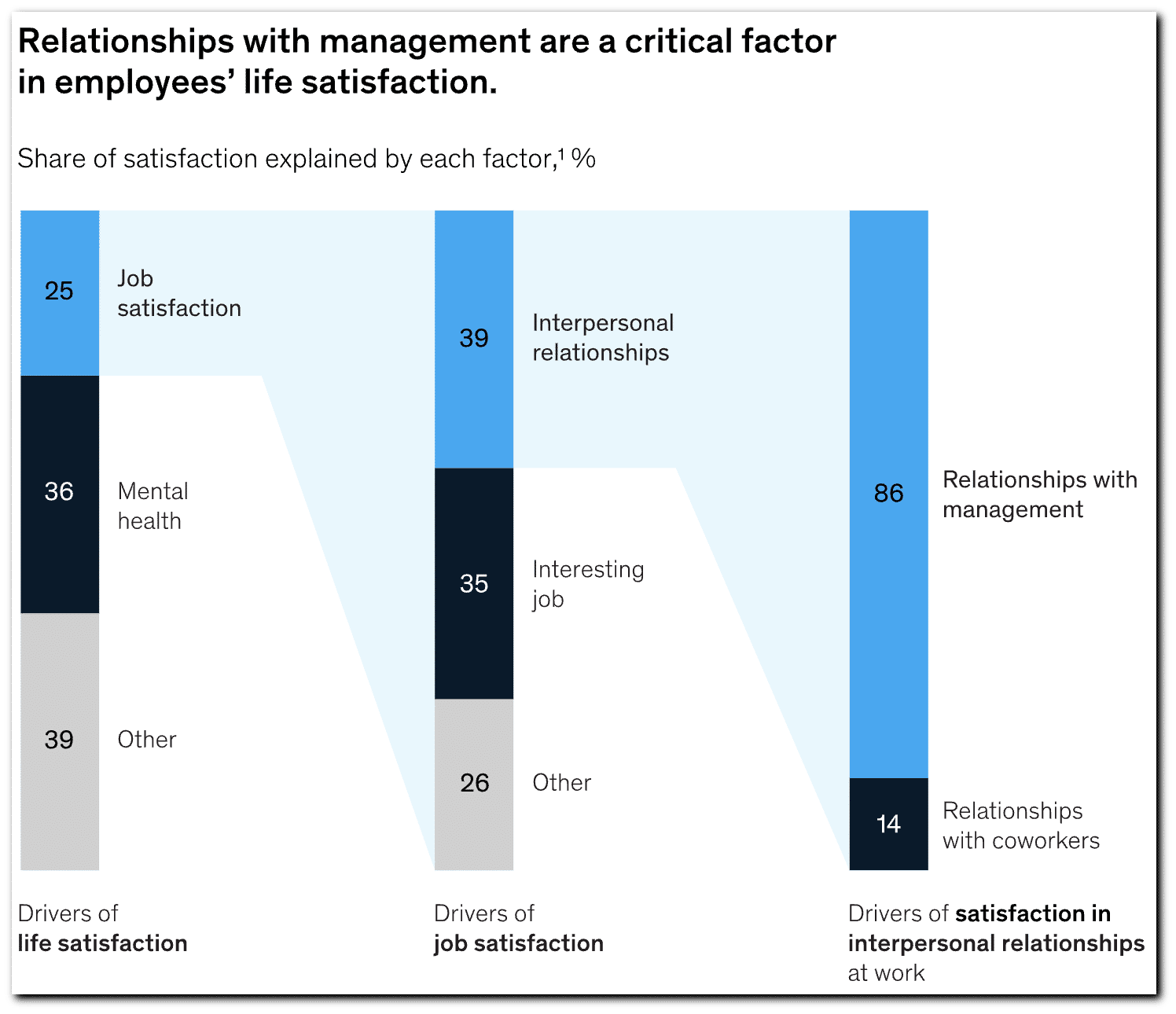“One piece of log creates a small fire, adequate to warm you up. Add just a few more pieces to blast an immense bonfire, large enough to warm up your entire circle of friends; needless to say, that individuality counts, but teamwork dynamites.” – Jin Kwon
Teamwork has undergone a radical transformation in the last few years—driven by the rise of hybrid and remote work models in organizations across most industries.
Prudential’s Pulse of the American Worker Survey found that 87% of workers want to work remotely at least one day a week and 68% say that the ability to work remotely and on-site is the perfect work model.
Similarly, a 2022 Gallup survey found that most remote-capable workers (meaning workers whose jobs can be done remotely) are now working at least partially remotely, with 42% having a hybrid work schedule and 39% working entirely remotely.
As we settle into this new work landscape, leaders have a huge role to play in creating a culture of collaboration. Here’s what that will look like.
What is collaborative leadership?
Collaborative leadership is a form of leadership practiced by empowering others to make decisions and take action. It involves co-creating with the people who are close to the project, which requires trust and transparency.
Collaborative leadership values openness and communication; encourages motivation, and treats all team members with respect. Leaders also work hard to establish a vision for the team they manage by staying connected to each team member so they can be informed of what is going on in the larger organization.
Collaborative leadership focuses on building strong teams with a sense of community. The benefits of collaborative leadership include increased productivity and better-quality work from team members, as well as improved employee satisfaction.
Collaborative leaders are more likely to be successful than authoritarian leaders because they have higher levels of engagement among their team members.
Styles of collaborative leadership
There are different styles of collaborative leadership:
- Director: This person is a natural leader who has no problems thinking on their feet and is able to communicate their vision to every single member of their team. Their natural leadership tendencies make them very results-oriented.
- Harmonizer: A people-oriented, supportive leader, the harmonizer employs a style of leadership that lends itself to making sure that everyone is heard. The harmonizer is a terrific relationship-builder and is able to bring out the strength in teams without looking for credit for themselves.
- Initiator: Out-of-the-box thinkers, the initiators are always looking for inspiration from the world around them. They are known for coming up with great ideas and seek to inspire others to provide creative solutions and share their ideas.
- Analyst: This is the bulldog of the individual styles. They tend to be very linear-thinking, making sure that the last box is checked before moving on to the next task. Because they are very process-oriented, data is their be-all and end-all. They prefer to examine a new idea or task from all angles before proceeding.
How to be a collaborative leader
Collaborative leadership from the top down is a critical factor in employees’ satisfaction with their jobs and their overall life satisfaction, according to McKinsey research.

(Source: McKinsey)
Leadership isn’t just about the “boss.” It’s about how a team functions together and how they collaborate to get things done. Managers should always be looking for ways to improve their leadership skills, such as practicing mindfulness or building a culture of trust by listening to their employees and rewarding them for their good work.
Here are some steps to take to sharpen your collaborative leadership skills:
- Listen to your employees’ needs. To be a successful collaborative leader, keep your “ear to the ground.” You need to listen to your employees and ask them what they need in order to do their jobs better. Be willing to work with them on projects and everyday tasks so that you can support their needs in the office or remotely. Use video conferencing collaboration tools so that you can have conversations with your team members face-to-face when necessary.
- Invest in collaborative tools. The key to being a collaborative leader is to invest in collaborative tools and platforms that can be used by all the team. Leaders should also provide the team with collaborative tools that will help them stay connected with their fellow workers on a daily basis.Some of these tools include a unified collaboration platform and cloud collaboration platforms that include things like chat, voice, video conferencing collaboration, and file sharing.
- Build partnership skills. Collaborative leaders are great at building a “safe space” built on trust and transparency. This “bubble” gives employees the space and opportunity to share ideas and perspectives. Employees are far happier with a freely collaborative culture. According to Deloitte, employees who engage in collaboration and have access to digital collaboration tools are 17% more satisfied with their jobs leading to a 50% employee retention rate.
- Make a plan. Creating an effective collaborative atmosphere in your organization requires a solid, workable plan. A few steps to creating communication strategies conducive to collaboration inclusive of all employees and channels are:
- Using the right technology. Find the right cloud collaboration and communication hub for your organization.
- Creating a “safe-space” for employees to share ideas and own up to mistakes and problems without fear of reprisal.
- Be open to and provide opportunities for feedback. Both formal and informal feedback have value, so give your employees the opportunity to say whether or not they feel something is working.
- Giving detailed, specific instructions. The failure of tasks is due to the failure of adequate instructions. Be clear, detailed, and specific about the expectations for the task at hand.
- Recognize successes. Employees need to know when they’ve done well. Nothing motivates more than recognition of an individual’s or team’s success or achievement of a milestone.
- Stay connected with other departments and channels. It’s not all about you. Yes, your department might be the greatest thing since sliced bread, but it doesn’t mean much if you’re not seeing the big picture. This means getting collaboration from all departments and areas of your organization.
RingCentral enables collaboration from the top down
Collaborative leadership is the next big thing for management. It’s about being a leader who invests in unified communications platforms, cloud collaboration tools, and relationships to make sure that teams are working together effectively.
Leaders in organizations large and small have discovered that RingCentral has the tools they need to facilitate streamlined collaboration that leads to business success. RingCentral MVP includes voice, video, and messaging to connect your teams effortlessly from one centralized application.
Learn more about what collaboration software is and be sure to check out other RingCentral collaboration features.
Originally published Oct 03, 2022
Looking For Startup Consultants ?
Call Pursho @ 0731-6725516
Telegram Group One Must Follow :
For Startups: https://t.me/daily_business_reads




